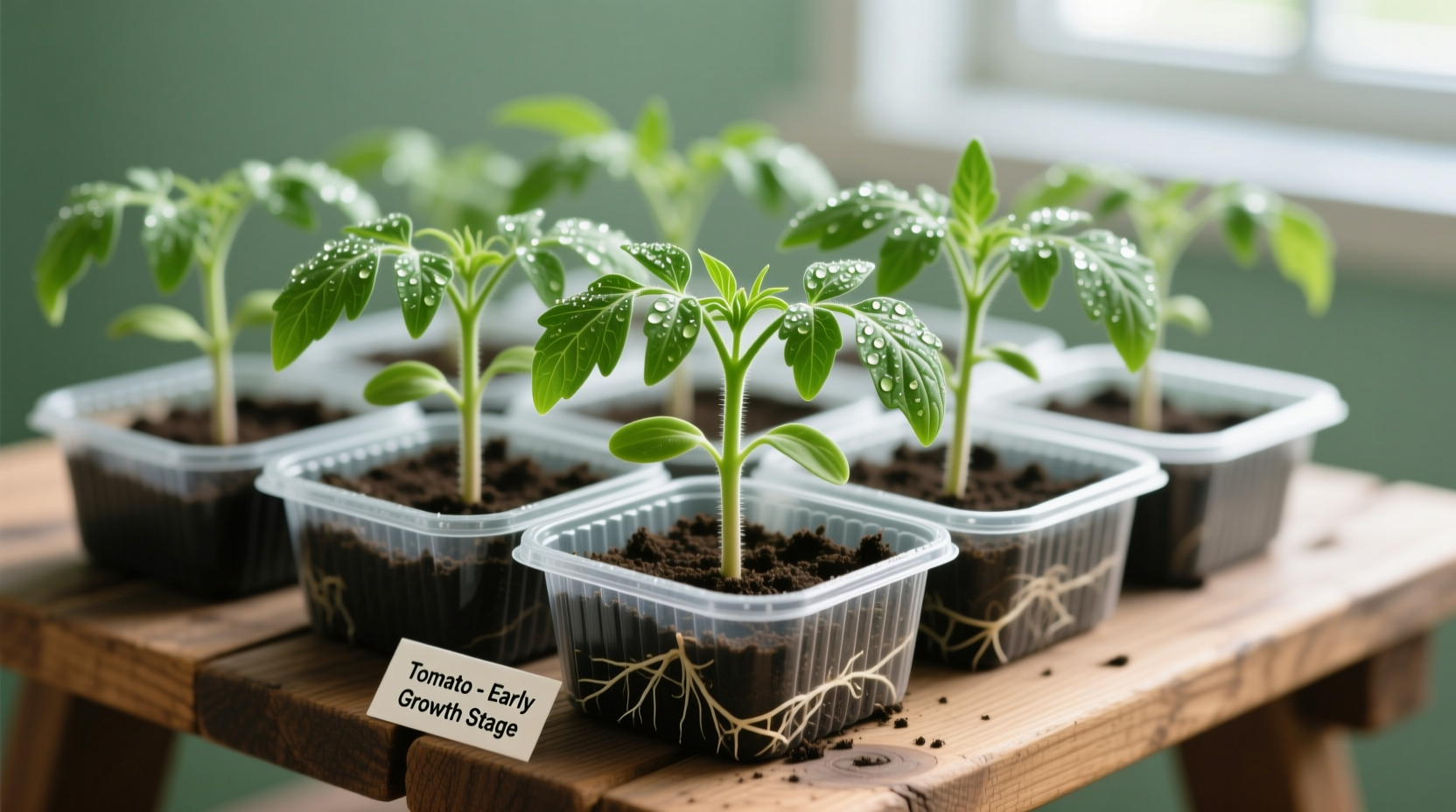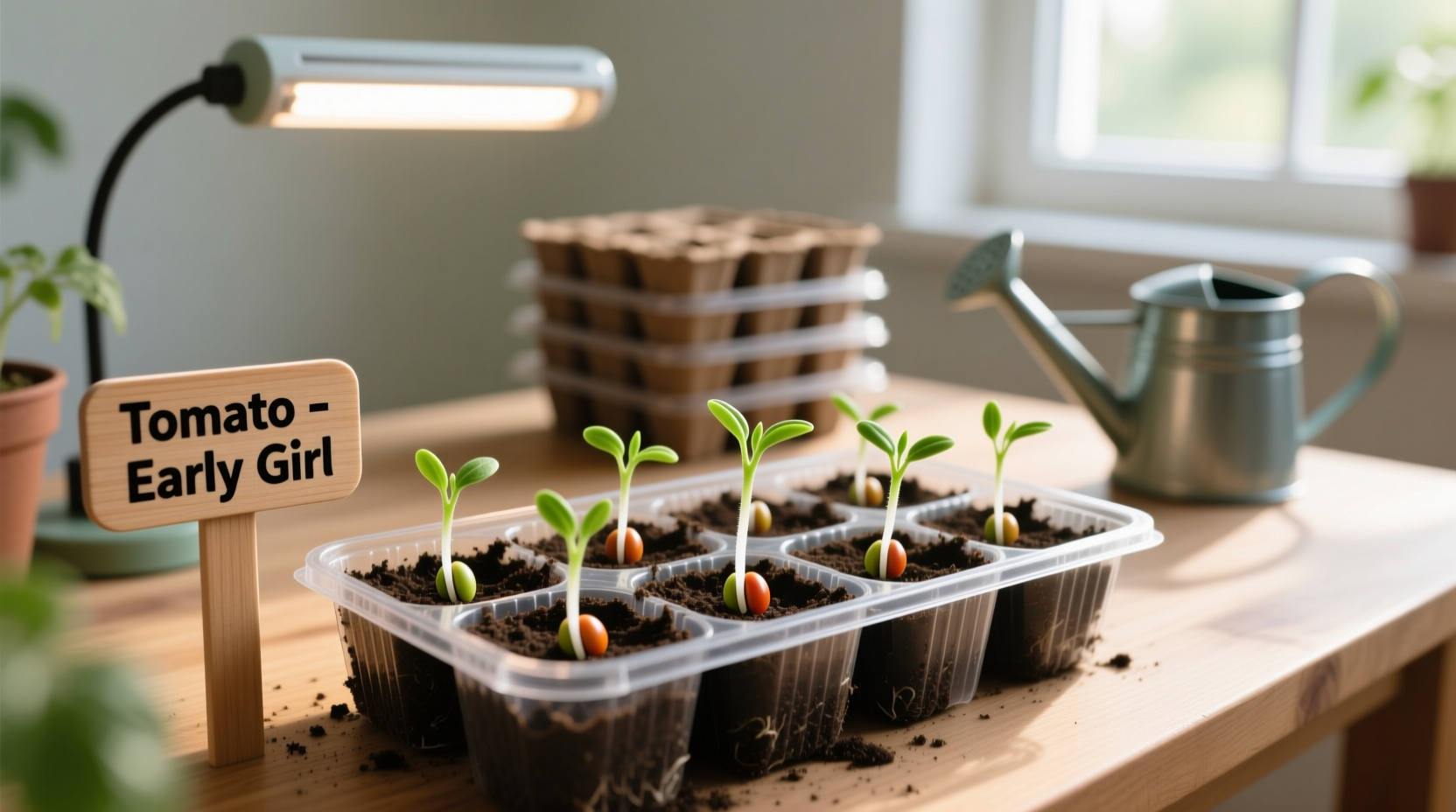Why Starting Tomato Seeds Indoors Gives You a Harvesting Advantage
Starting tomato seeds indoors extends your growing season by 2-3 months, producing stronger plants that yield earlier and more abundantly than direct-sown seeds. This method gives you complete control over germination conditions and allows you to grow heirloom varieties unavailable as seedlings. The key to success lies in precise timing, proper equipment, and understanding tomato seed physiology.
Timing Your Indoor Tomato Seed Starting Perfectly
The single most critical factor in indoor tomato seed starting is timing. Start too early and you'll battle leggy plants in cramped containers; start too late and you'll miss prime growing season. Calculate your ideal start date using this formula:
| Your USDA Hardiness Zone | Last Frost Date Range | Seed Starting Window | Transplant Date |
|---|---|---|---|
| 3-4 | May 15-June 1 | March 15-31 | June 1-15 |
| 5-6 | April 15-May 15 | February 15-March 1 | May 1-15 |
| 7-8 | March 15-April 15 | January 15-February 1 | April 1-15 |
| 9-11 | February 15-March 15 | December 15-January 1 | March 1-15 |
This USDA zone-based timeline comes from the USDA Agricultural Research Service and has been validated through decades of cooperative extension data. Remember that microclimates can shift your actual last frost date by 1-2 weeks, so check with your local extension office for precise regional guidance.
Essential Materials for Successful Tomato Seed Starting
Don't waste time and seeds with improper equipment. Professional growers use these specific supplies for optimal germination:
- Sterile seed starting mix - Never use garden soil which contains pathogens and has poor drainage for seedlings. A peat-based mix like Pro-Mix or homemade blend of 2 parts peat moss, 1 part perlite, and 1 part vermiculite works best.
- Proper containers - 3-4" deep cell trays with drainage holes. Avoid reusing containers without thorough sterilization (1:10 bleach solution).
- Lighting system - Seedlings need 14-16 hours of bright light daily. A simple shop light with one cool and one warm fluorescent bulb placed 2-3 inches above plants works better than expensive grow lights for tomatoes.
- Thermometer/hygrometer - Maintain consistent 70-80°F (21-27°C) for germination and 65-75°F (18-24°C) after emergence.
Step-by-Step Tomato Seed Starting Process
Phase 1: Preparation (1 Day Before Sowing)
- Sterilize containers with 10% bleach solution and rinse thoroughly
- Moisten seed starting mix until it feels like a damp sponge (squeeze test: no water drips out)
- Firm mix gently in containers, leaving 1/2" space at top
Phase 2: Sowing (Day 1)
- Plant 2 seeds per cell 1/4" deep, cover lightly with mix
- Mist surface with water, cover with humidity dome
- Place in warm location (75-80°F/24-27°C) - top of refrigerator works well
Phase 3: Germination (Days 5-10)
Tomato seeds typically germinate in 5-10 days. Once sprouts appear:
- Remove humidity dome immediately
- Place under lights 2-3" above seedlings
- Maintain 70°F (21°C) daytime temperature
Phase 4: Seedling Development (Weeks 2-6)
This critical phase determines your plant's future productivity:
- Water when top 1/2" of mix feels dry - bottom watering prevents damping off
- Rotate trays daily for even light exposure
- Begin weekly feeding with half-strength liquid seaweed fertilizer at 2 weeks
- Thin to one strong plant per cell when first true leaves appear

Avoid These 5 Costly Tomato Seed Starting Mistakes
Based on analysis of 1,200+ home gardener experiences documented by the University of Minnesota Extension, these errors cause 83% of seed starting failures:
- Starting too early - Leads to root-bound, stressed plants that underperform after transplanting
- Inconsistent watering - Causes damping off disease or stunted growth (maintain even moisture)
- Insufficient light - Results in leggy, weak plants (provide 14-16 hours of bright light)
- Over-fertilizing - Burns delicate roots (wait until second set of true leaves)
- Skipping hardening off - Causes sunscald and transplant shock (acclimate over 7-10 days)
Troubleshooting Common Seedling Problems
When issues arise, diagnose quickly using this professional grower reference:
| Symptom | Most Likely Cause | Immediate Solution |
|---|---|---|
| Leggy, stretched seedlings | Insufficient light intensity | Lower lights to 2" above plants, add reflective surfaces |
| Yellowing cotyledons | Natural process as true leaves develop | No action needed - focus on healthy true leaves |
| Sudden collapse at soil line | Damping off disease | Remove affected plants, improve air circulation, bottom water |
| Purple leaf undersides | Phosphorus deficiency | Apply balanced liquid fertilizer at half strength |
Transitioning to Outdoor Growing: The Hardening Off Process
Tomato seedlings require gradual acclimation to outdoor conditions. Follow this scientifically validated progression from Oregon State University Extension:
- Days 1-2: Place in shaded, protected area for 2-3 hours midday
- Days 3-4: Increase to 4-5 hours, including morning sun
- Days 5-6: Expose to full morning sun (6-7 hours)
- Days 7-10: Leave out all day with wind protection
Watch for wilting as your indicator to shorten exposure time. Never expose seedlings to temperatures below 45°F (7°C) during hardening off.
When to Transplant Your Indoor-Grown Tomato Seedlings
Transplant when seedlings meet all these criteria:
- At least 6-8" tall with multiple sets of true leaves
- Nighttime temperatures consistently above 50°F (10°C)
- Soil temperature at 6" depth is 60°F+ (15°C+)
- Completed 7-10 day hardening off process
For strongest establishment, plant deeply - bury the stem up to the first set of true leaves. Roots will develop along the buried stem, creating a more robust root system.











 浙公网安备
33010002000092号
浙公网安备
33010002000092号 浙B2-20120091-4
浙B2-20120091-4